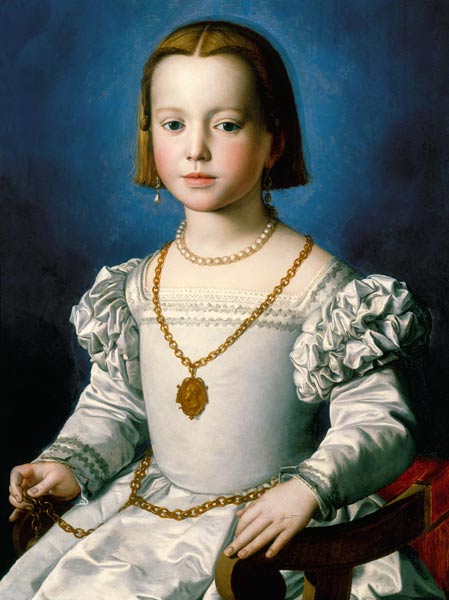Ein frölich wesen / Les Flamboyants
Secular & textless music of Henrich ISAAC
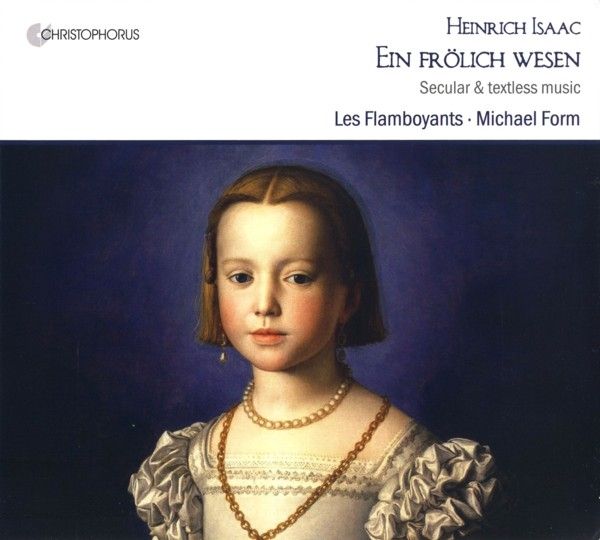
medieval.org
Christophorus CHR 77360
2012
HEINRICH ISAAC
(c.1450-1517)
1. Palle palle a4 [1:45]
Capella Giulia Chansonnier, Rome, Biblioteca Apostolica
Vaticana, C.G.XIII.27
2. Tart ara a3 [2:13]
Ottaviano Petrucci: Canti C N° Cento Cinquanta (Venice,
1503/04)
ANONYM
3. J'ay pris amours a3 [3:49]
Codex Cordiforme, Paris, Bibliothèque Nationale,
Rés. Vmc., Ms 57
4. J'ay pris amours a3 [0:59]
Firenze, Biblioteca Nazionale Centrale, Ms. Magliabecchi XIX 59
5. Jay pris amours a4 [1:56]
Ottaviano Petrucci: Canti C N° Cento Cinquanta (Venice,
1503/04)
6. La Spagna a3 [1:22]
Agnus Dei II from Missa La Spagna
7. Et je boi d'autant a4 [0:54]
Florence, Biblioteca Nazionale Centrale, MS Banco Rari 229
8. In meinem Sinn a4 [1:21]
München, Bibliothek der Ludwig-Maximilians-Universität, SS 80
328-331
9. [Textless composition] a3 [1:39]
Wilphlingseder: Erotemata musices practicae (Nürnberg,
1563)
10. De tous biens playne / Et qui lui dira a2 [1:37]
Segovia, Archivo Capitular de la Catedral, MS s.s.
11. Mon père m'a donné mari a4 [1:14]
12. [Textless composition] a3 [1:26]
Florence, Biblioteca Nazionale Centrale, MS Banco Rari 229
JACQUES BARBIREAU
(1455-1491)
13. Een vrolic wesen a3 [1:16]
Segovia, Archivo Capitular de la Catedral, MS s.s.
14. En vrölic wessen a2 & a3 [2:14]
Vienna, Österreichische Nationalbibliothek, MS
18832
Terza Pars from Missa Ein fröhlich wesen, Pleni sunt
coeli, RISM 1539
15. Ain frelich Wesen a4 [1:20]
Pernner-Codex, Regensburg, Proske-Bibliothek, MS C120
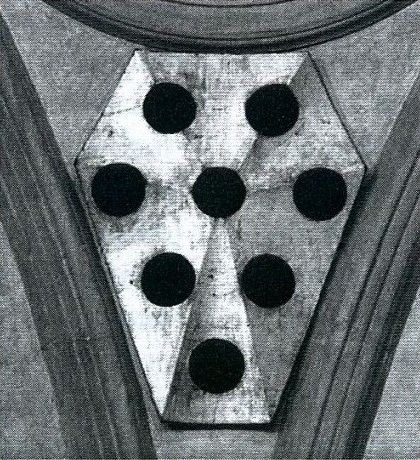
GUILLAUME DUFAY (c.1400-1474)
16. Le serviteur hault guerdonné a3 Rondeau [4:36]
Porto, Biblioteca Municipal, Cod. 714
17. Le serviteur a3 [1:56]
Florence, Bibl. Nazionale Centrale, MS Banco Rari 229
18. Tristitia vestra a3 [1:22]
19. Der Hundt: Das Kind lag in der Wiegen / Secunda Pars a3
[6:32]
20. Benedictus qui venit a3 [1:54]
Hieronymus Formschneyder: Trium vocum carmina (Nürnberg,
1538)
21. Fortuna in mi (Intabulierung) [2:29]
Hans Kotter: Deutsche Orgeltabulatur 1532
JUAN DE URREDE (c.1430-after 1482)
22. Nunqua fue pena maior [5:06]
Ottaviano Petrucci: Harmonice Musices Odhecaton A (Venice, 1501)
ANONYM
23. Numqua fue pena maior [2:32]
24. Par ung iour de matinee a4 [1:28]
Ottaviano Petrucci: Canti C N° Cento Cinquanta (Venice,
1503/04)
ANTOINE BUSNOYS (?)
(c.1430-1492)
25. Fortuna desperata a3 [1:21]
Paris, Bibliothèque Nationale, Dép. des Manuscrits, MS
4379
26. Fortuna desperata a3 [1:25]
Florence, Biblioteca Nazionale Centrale, Ms. Magliabecchi XIX 121
27. Sanctus a4 (Fortuna desperata) [1:40]
Bologna, Civico Museo Bibliografico Musicale MS 017
MONODIE
28. Bruder konrad [0:34]
Berlin, Staatsbibliothek, Preußischer Kulturbesitz, Mus.-Ms. Z.98
29. [1:23]
Frater conradus in fa a4
Agnus Dei III from Missa Carminum, Kleber-Tabulatur
(1524)
Exemplum a4, cantus firmus Bruder Conrad
Christe from Missa Paschalis
30. Fortuna / Bruder Conrat a4 [1:19]
Vienna, Österreichische Nationalbibliothek MS 18810
31. Fortuna disperata / Sancte Petre / Ora pro nobis a5
[1:32]
Segovia, Archivo Capitular de la Catedral MS s.s.

Les Flamboyants
www.lesflamboyants.eu
Els Janssens-Vanmunster, chant
Michael Feyfar, chant
Wolf-Eckart Dietrich, clavicytherium
Margret Görner, flute
Rogerio Gonçalves, dulcian & percussion
Irene Klein, viola da gamba & viola d'arco
Isabel Lehmann, flute
Marc Lewon, lute, gittern, Renaissance guitar, viola d'arco &
chant
Romina Lischka, viola da gamba
Giovanna Pessi, harp
Baptiste Romain, vielle & Renaissance violin
Silvia Tecardi, vielle & viola d'arco
Michael Form
flute & direction
INSTRUMENTE
Vielle • Maurizio Marcelli, 1997, nach Fresko im
Cappellone (San Nicola da Tolentino, Italien 14. Jh.)
Vielle • Judith Kraft, Paris, Frankreich 2007,
Vorlage Italien (ca. 1400)
Viola d'arco • Richard Earle, Basel, Schweiz 2009,
nach Gemälde Lorenzo Costa (1497, San Giovanni in Monte, Bologna)
Viola d'arco • Robert Foster, Wiveliscombe,
Großbritannien 2010, nach Gemälde Lorenzo Costa (1497, San
Giovanni in Monte, Bologna)
Renaissance-Violine • Richard Earle, Basel, Schweiz
2008, Vorlage Anonymus (Italien ca. 1530)
Diskantgambe & Altgambe • Robert Foster,
Wiveliscombe, Großbritannien 2001,
nach Gemälde „Allegorie der Musik“ (Anonymus, Süddeutschland
ca. 1540, Musikmuseum Basel)
Bassgambe • Richard Earle, Basel, Schweiz 1990, nach
Gemälde „Bankett der Nymphen“ Jacopo Tintoreno
(Gemäldegalerie Dresden)
Plektrum-Laute • Stephen Gottlieb, London,
Großbritannien 2001, nach Gerard David (1450-1523)
Quiterne • George Philip Stevens, Lydd,
Großbritannien 2004, nach „Wartburg-Quinterne“ (1450)
und Lyversberger Passion" (1465-70)
Renaissance-Gitarre • Julian Behr, Wyhlen,
Deutschland 2005, nach Belchior Dias (Lissabon 1581) Gotische Harfe
Erich Kleinmann, Rangendingen, Deutschland 2002, nach Anonymus (ca.
1430-1440)
Clavicytherium • Volker Platte, Remscheid,
Deutschland 1990, Vorlage Donaldson Collection (Royal College of Music,
London)
Renaissance-Blockflöte in c' • Peter van der
Poel, Nieuwegein, Niederlande 1991 nach Silvestro Ganassi (Venedig 1535)
Renaissance-Blockflöten in f & g' • Monika
Musch, Konstanz 1996/Freiburg i. Br., Deutschland 2010, nach Silvestro
Ganassi (Venedig 1535)
Zylindrische Blockflöten in c", g' & f' •
Bob Marvin, Eustis, U.S.A., 1998
Consort-Blockflöte in e' • Peter van der Poel,
Bunnik, Niederlande 1999, nach Arzasius Schnitzer (1557) Consort-Blockflöte
in f • Walter Meili, Teufen, Schweiz 1999
Consort-Blockflöten in e' & d' • Monika
Musch, Freiburg i. Br., Deutschland 2010, nach Arzasius Schnitzer
(1557) Consort-Blockflöte in c • Bob Marvin,
Eustis, U.S.A., 1995)
Dulzian • Guntram Wolf, Kronach, Deutschland 2009,
Vorlage 16. Jh. (Landesfürstliche Burg Meran) Pandereta nach
spanischem Gemälde (Anfang 16. Jh.)
Grosse Trommel • Rogerio Gonçalves, La Sagne,
Schweiz 2005, nach Gravur (Deutschland Ende 15. Jh.)
Executive producer DRS 2: Annelise Alder
Executive producer note 1 music: Joachim Berenbold
Recording: 23.-29. June 2010, Temple St. Jean, Mulhouse (France)
Recording producer & digital editing: Michaela Wiesbeck
Editor & layout: Joachim Berenbold
Cover picture: Agnolo di Cosimo ("Il Bronzino") "Portrait of Bia de'
Medici" (c. 1542), Uffizi, Florence
Artist photo: Gabriele Lewon
Ⓟ + © 2012 note 1 music gmbh, Heidelberg, Germany
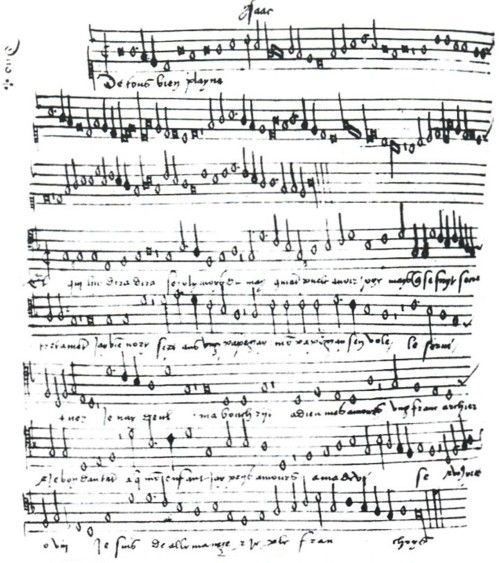
Henricus Isaac • Ein fröhlich wesen
by Michael Form
I must inform your lordship that the singer lsach has been in
Ferrara and has written a motet on a fantasy entitled La mi la sol la
sol la mi, which is very good, and he wrote it in two days. From this
one can only judge that he is very rapid in the art of composition;
besides he is good-natured and easy to get along with [...] he has
taken the period of one month to reply as to whether he will serve or
not. [...] To me he seems well suited to serve your lordship,
more so than Josquin, because he is of a better disposition among his
companions, and he will compose new works more often. It is true that
Josquin composes better, but he composes when he wants to, and not when
one wants him to, and he is asking 200 ducats in salary while Isach
will come for 120. (1)
This famous passage comes from a letter written by the courtier Gian di
Artiganova to his lord Ercole I d'Este on September 2nd, 1502. The
letter recommends Heinricus Isaac to be appointed to the position of maestro
di cappella at the court of Ferrara and reveals to us Isaac's
likeable character; he was known by his contemporaries for being good
natured and amenable. During a stay in Ferrara, he had presented the
court with a sample of his art by composing a motet upon a given
musical subject in a very short time. He then appears to have provided
an enjoyable working atmosphere while rehearsing and performing the
piece with the singers of the court chapel. But, even though Isaac's
composition was very well received, Ercole I ultimately decided to hire
Josquin instead.
Henricus Isaac therefore remained faithful to Florence, remaining there
where he had spent most of his professional life. The first reference
to Isaac's presence in this city on the river Arno dates from July 1,
1485. At this time he was a member of the cantori di S. Giovanni,
who were in charge of singing mensural polyphony on behalf of the
Medici family at the cathedral, at the baptistery, and at the SS.
Annunziata church. On April 8, 1492, however, the death of Lorenzo "il
Magnifico" was to seal the decline of this noble family for many years
to come. The arrival of decadence in Florence and increasing disruption
of its economy provided excellent opportunity to the priest Savonarola,
a preacher of repentance, to incense the population against the
Medici—a task he was to find rather easy. The political
developments that followed spelled grave consequences for Isaac: on
April 1, 1493 the chapel of the cantori was disbanded. Isaac
stayed in the private service of Piero de' Medici for several months
until the entire Medici family was driven out of Florence in November
1494, depriving Isaac of his patrons and protectors. Savonarola's reign
of terror began, coming to an abrupt end only with his public execution
on May 23, 1498 on the Piazza della Signoria. During this dark period
in the artistic and musical history of Florence, Isaac was able to
depend on the contact he had previously made with the Habsburg court to
provide him with future employment.
It appears that Isaac had made a lengthy stop at the court of Duke
Sigismund der Münzreiche ("the rich in coin") in Innsbruck
while travelling from Flanders to Tuscany for the first time, making
his first contact with the Habsburg dynasty there. Kaiser Maximilian I,
who had been present in Northern Italy during the political upheaval in
Florence, sent Isaac and his wife to Vienna, where he was appointed
composer and servant to the court of Innsbruck in November 1496. From
1502 onwards—perhaps after a "guest performance" in Ferrara
(which did not result in the anticipated permanent
position)—Isaac seems to have visited Florence more frequently.
In 1512 at the latest, he settled there permanently so that he could
live out his last years in his adopted home town. In 1513 Giovanni de'
Medici was enthroned as Pope Leo X and granted his former private
teacher a generous pension connected to the honorary title of prepositus
capelle cantus figuratus ("provost of the chapel for polyphonic
singing"). He was granted comparable benefits by Kaiser Maximilian
after he had made what appears to be his last journey to Innsbruck.
These pensions are notable in that they provide a measure of how highly
esteemed this musician and servant was—he who was prepared to
compose when it was expected of him and who, with his obliging
demeanour, was able to befriend the powerful rulers of his era.
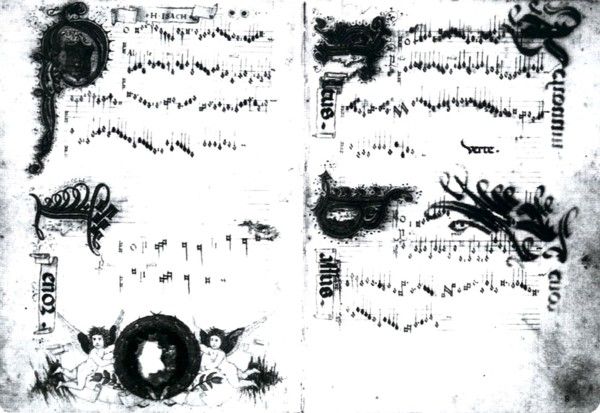
ON THE MUSIC
Henricus Isaac was one of the most famous and most highly regarded
composers of his time; his music was so popular that it was still being
printed in 1555, thirty-eight years after his death, by Hieronymus
Formschneyder in Nuremberg. Thanks mainly to the efforts of Guido
Adler, the young field of musicology at the beginning of the twentieth
century applied itself to making a case for Isaac. Prompted by Adler,
Anton Webern wrote his dissertation at Vienna University on the second
part of Isaac's Choralis Constantinus in 1909. It is no great
surprise that general interest focused on Isaac's monumental oeuvre of
sacred music—no other composer of the Renaissance wrote a greater
number of mass cycles. His secular songs could not but appear pale in
comparison despite the fact that precisely some of these songs, such as
Innsbruck, ich muss dich lassen ("Innsbruck, I must part from
thee") were held in unparalleled regard. Unfortunately, Isaac's music
became increasingly marginalised in the course of the second half of
the twentieth century and is currently—and
unduly—neglected, as reflected by the lack of a complete edition
of his work. Aside from some performing editions and anthologies, his
secular works in particular are only available in an edition by
Johannes Wolf (Vienna, 1907), which is in dire need of a revision.
At the centre of this recording lies a group of ten compositions, each
of which is based on pre-existing musical material (2). With these
Isaac joins the long line of composers who have paid reverence to their
elder colleagues, such as Guillaume Dufay, Hayne van Ghizeghem, and
Jacques Barbireau. Most of these pieces are untexted but can usually be
unambiguously identified with their models by their text incipits. Fortuna
disperata / Sancte Petre / Ora pro nobis was apparently Isaac's
contribution to a compositional competition—there exist similar
pieces by Jean Japart as well as by an anonymous composer. The
compositional task seems to have comprised of taking a well known
chanson melody and combining it with the invocation and response
formulas of the Gregorian Litany of the Saints, distributed
antiphonally between tenor primus and tenor secundus.
Isaac's setting is completed by two freely composed accompanying voices
to form a five-voiced piece (3). In De tous biens playne / Qui lui
dira, Isaac set the beginnings of no fewer than sixteen different
chansons against the melody of the most famous chanson of the fifteenth
century, De tous biens playne (4). This dense quodlibet is
nothing but a brilliant tour de force: while at first it seems that the
arrangement of text fragments is dictated by the limited possibilities
in combining their melodies and that of De tous biens playne,
on closer inspection, they appear be arranged in a narrative in which
the protagonist is the parrot of Margaret of Austria, in the midst of
escaping.
In stark contrast to the saturation of quotations in De tous biens
playne / Qui lui dira stand two arrangements of J'ai pris amours.
Each version involves only one short subject, which is repeated in
ostinato-like fashion up to nineteen times and in every contrapuntally
conceivable position. In the first, the subject is the beginning of the
chanson melody, while in the second it is a plaintive semi-tonal figure.
Isaac's experiment to estrange the melody of Fortuna desperata
through semitone transposition is entirely without precedent—the
resulting distortions of its Phrygian-mode cadences create a special
challenge. Other examples of Isaac's ingenuity include Tart ara,
which gives the illusion of containing a proportion canon; Le
serviteur, which displays the greatest possible heterogeneity of
the added voices; Ain frelich wesen, which takes the the lowest
voice of the original composition (the contratenor bassus) and
uses it in a higher one (as contratenor altus) in the new
setting; and Fortuna desperata, which in a similar exchange of
voices transposes the tenor voice up a fifth to become the superius,
all while maintaining the original key of the piece. The musical
discourse of proximity and distance from the model composition to newly
composed voices which runs through all these pieces is precisely what
fascinated Webern and others at the beginning of the twentieth century.
To these ten masterpieces we chose to add an eleventh, Numqua fue
pena maior, whose authorship is unknown. While surely Isaac would
have known the original villancico, Nunca fue pena mayor, by
his Flemish compatriot Johann Vreede (who after moving to Spain called
himself Juan de Urrede), because it was copied into Florentine
manuscripts around 1500, the inclusion of this arrangement of the piece
in the programme is not to suggest that it might have been composed by
Isaac. Rather, we decided to include it because it shows a treatment of
material similar to that of Isaac: its original tenor line, moving in a
slow triple metre (tempus perfectum prolatio minor), is
surrounded by three newly-composed voices in alla breve time (tempus
imperfectum diminutum), which add new layers of ornamental figures
in clear contrast to the reference material of the pre-existing voice.
While zooming in on Isaac's "derivative compositions," Les
Flamboyants have also attempted to include performances of the
models—though we have not done so slavishly. In addition, we
chose secular compositions from a wide range of styles, including
German songs and French chansons among others, in order to honour
Isaac's unique versatility.
Our final piece, Palle palle, is especially puzzling. It
probably is a tribute to the traditional battle cry of the Medici,
referring to the red spheres in the family's coat of arms and to the
partisans of the Medici family who, after these spheres, were called
"Palleschi" by the Florentine republicans during their frequent feuds.
It is possible that Isaac's tenor line paraphrases this battle cry, or
that its division into 5+3 long notes is supposed to signify the eight
spheres in the coat of arms of the Medici, which can still be admired
today, rendered in a painting on the ceiling of the Sagrestia Vecchia
of San Lorenzo in Florence.
Translation: Marc Lewon & Catherine Motuz
1 quoted from David Fallows: Joaquin, Turnhout (Brepols
Publishers), 2009, pp. 236-237.
2 Ain frelich wesen, De tous biens playne / Et qui lui dira,
Fortuna desperata, Fortuna in mi, Fortuna / Bruder Conrat, Fortuna
disperata / Sancte Petre / Ora pro nobis, J'ai pris amours I & II,
Le serviteur, Tart ara.
3 Jean Japart's version of Vray dieu d'amours / Sancte
Joannes baptista / Ora pro nobis can be found in: Le
Maître de Fricassée. Secular Music of Jean Japart, Les
Flamboyants (Christophorus CHR 77353, 2011).
4 After some intensive comparative research, we were able to
identify all sixteen chanson beginnings in order to allow a performance
of the piece.
